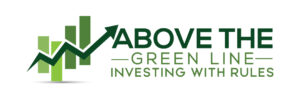Municipal Bonds
What are municipal bonds?
Municipal bonds (or “munis” for short) are debt securities issued by states, cities, counties and other governmental entities to fund day-to-day obligations and to finance capital projects such as building schools, highways or sewer systems. By purchasing municipal bonds, you are in effect lending money to the bond issuer in exchange for a promise of regular interest payments, usually semi-annually, and the return of the original investment, or “principal.” A municipal bond’s maturity date (the date when the issuer of the bond repays the principal) may be years in the future. Short-term bonds mature in one to three years, while long-term bonds won’t mature for more than a decade.
Generally, the interest on municipal bonds is exempt from federal income tax. The interest may also be exempt from state and local taxes if you reside in the state where the bond is issued. Bond investors typically seek a steady stream of income payments and, compared to stock investors, may be more risk-averse and more focused on preserving, rather than increasing, wealth. Given the tax benefits, the interest rate for municipal bonds is usually lower than on taxable fixed-income securities such as corporate bonds.
The two most common types of municipal bonds are the following:
- General obligation bonds are issued by states, cities or counties and not secured by any assets. Instead, general obligation are backed by the “full faith and credit” of the issuer, which has the power to tax residents to pay bondholders.
- Revenue bonds are not backed by government’s taxing power but by revenues from a specific project or source, such as highway tolls or lease fees. Some revenue bonds are “non-recourse”, meaning that if the revenue stream dries up, the bondholders do not have a claim on the underlying revenue source.
In addition, municipal borrowers sometimes issue bonds on behalf of private entities such as non-profit colleges or hospitals. These “conduit” borrowers typically agree to repay the issuer, who pays the interest and principal on the bonds. In cases where the conduit borrower fails to make a payment, the issuer usually is not required to pay the bondholders.
